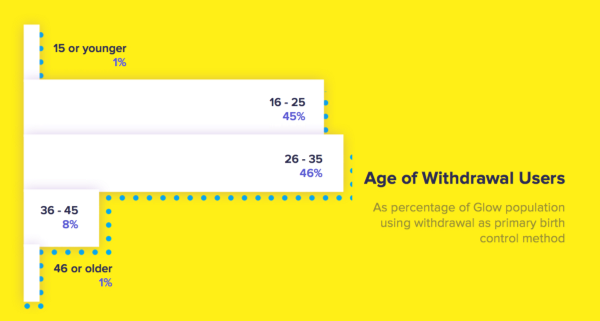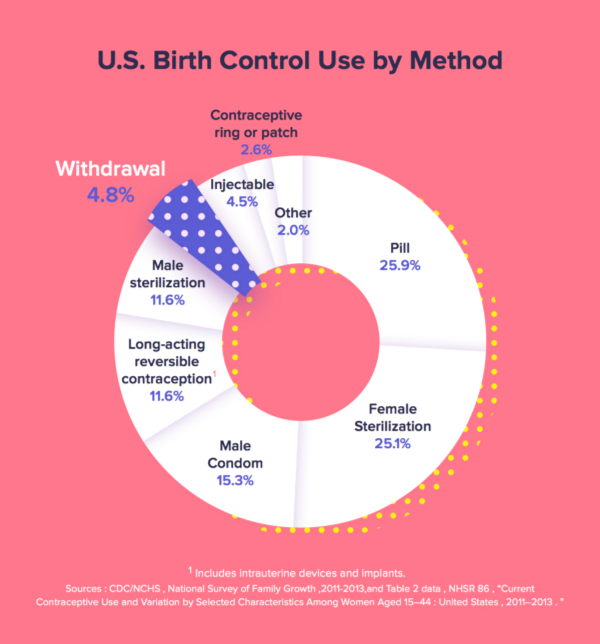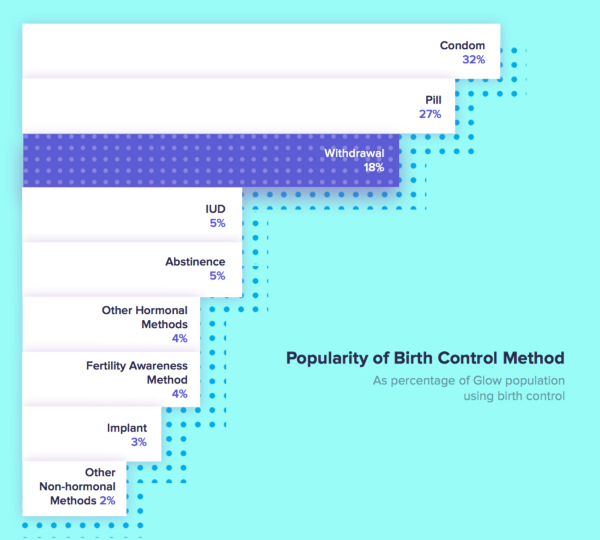Why the Pull-Out Method Is Still a Popular Form of Birth Control

By:
Ah, sex. One of the few activities you can do that gives you an endorphin rush and burns calories without having to do something awful like jogging.
If you're in a relationship, you're hopefully having regular, healthy, safe sex. We all know there are various ways to have safe sex, and if you're not looking to add to the family, various forms of birth control to achieve that.
But what you may not know is that one contraceptive method in particular — despite having a proven failure rate of around 22 percent — continues to be popular among young, hetero women.
Although it comes with risks, the pulling out method is a go-to method for women.
Many women in their late 20s and 30s, who are probably well aware of the risks of pregnancy and STDs, rely on the practice regularly. NYMag.com writer Ann Friedman even dubbed them the pull-out generation. A 2014 study found that 33 percent of women used the pull out method at least once in a given month.
To find out how common pulling out is, Glow, Inc., a fertility app marketed for women, drew data from the Centers for Disease Control and from their own users to create these graphs and charts about popular forms of birth control. Of course, heterosexual sex is between a man and a woman, so while both parties are making the decision to use the pull-out method, these findings show not only how many couples are using it, but why some women prefer it.
According to Glow, slightly more adults in the U.S. choose pulling out than teens and young adults:
 Glow, Inc./Medium - medium.com
Glow, Inc./Medium - medium.com
Data shows that pulling out beats out IUD use in the U.S.
According to CDC statistics, about 5 percent of women have used pulling out, putting it ahead of methods just as the IUD or injectables (a type of shot). IUDs have a failure rate of less than 1 percent, meaning they prevent more than 99 percent of pregnancies.
 Glow, Inc./Medium - medium.com
Glow, Inc./Medium - medium.com
But according to Glow's study, as many as 18 percent of couples use the pull-out method, not too far behind condoms and the pill.
 Glow, Inc./Medium - medium.com
Glow, Inc./Medium - medium.com
There is a bit of difference between the two findings, but the reason isn't clear yet. "It’s hard to say," Glow reports. "We cannot accurately read cause and effect from an observational dataset like ours, but our best guess is that women who use withdrawal like knowing the specifics of their cycle, and thus enjoy using cycle tracking apps like Glow." It's also possible that users were more candid with the app.
Glow found the top reasons women choose pulling out.
 Glow, Inc./Medium - medium.com
Glow, Inc./Medium - medium.com
Besides feeling good and being convenient, women have other reasons for going with the pulling out method.
For some women, the pill, injectables, and IUDs aren't pleasant. "Hormonal birth control made me a wreck, and we were each other's only partners," explains one Reddit user on the "Sex" subreddit. "I already have painful periods so I didn't want the IUD, and condoms feel pretty shit to both of us. Perhaps those were lame reasons; we were pretty young and confident."
A different Redditor expressed similar thoughts as to why she had no problem with pulling-out, posting, "I tried a couple different brands of hormonal birth control and I just couldn't deal with how it made me feel..I have been with my SO [significant other] for nine years and for the last two [years] we have only used the pull out method," she adds. "We haven't had any accidents and zero pregnancy scares."
In these women's cases, it's not about ignorance, it's about convenience, plus sidestepping the side effects of hormonal birth control.
Sometimes, the pill isn't as easy to get as you'd like to think.
The Huffington Post spoke to a 26-year-old woman named Tamara, who explained that issues with birth control pills are what made her rely on the pull-out method:
“I think that there’s a misconception. It wasn’t because of laziness,” Tamara said. “For me it was access.” Tamara was on the pill for years, but then she moved and had to drive 45 minutes to her local clinic once a month — an ordeal that cost her half a day’s work. She didn’t use condoms because of a latex allergy that makes her break out in a rash.
Another Redditor reported "one" scare, but no pregnancies, and hasn't given up on the pull-out method." The people who get pregnant from using the pull out method often didn't pull out in time," she states.
How risky is pulling out?
Some doctors explain that coitus interruptus isn't even considered to be actual birth control. "[It] is a bit like Russian Roulette," legendary Dr. Ruth Westheimer tweeted. Even if you are able to do it successfully, “sperm is mobile,” Raegan McDonald-Mosley, M.D., M.P.H., chief medical officer at the Planned Parenthood Federation of America, told Men's Health. “It swims around. Even if a little bit of semen gets near the woman’s vulva, it can swim into the vagina and increase the risk of pregnancy.”
Comparatively, the male condom actually has a failure rate of about 18 percent, according to the CDC while pulling-out has a failure rate of 22 percent.
Both methods seem almost equally ineffective, but experts explain that the condom only fails when it isn't put on correctly or in time, or when it breaks without anyone noticing — the first two reasons are things you can control more easily than relying on pulling out. With perfect use, the male condom is 98 percent effective at preventing pregnancy.
Pulling out isn't too far behind. For couples that pull out perfectly every time, the rate of pregnancy is only 4 percent, according to Planned Parenthood, but they warn that this requires a lot of experience, trust, and caution, and "even if a man pulls out in time, pregnancy can still happen. Some experts believe that pre-ejaculate, or pre-cum, can pick up enough sperm left in the urethra from a previous ejaculation to cause pregnancy. If a man urinates between ejaculations before having sex again, it will help clear the urethra of sperm and may increase the effectiveness of withdrawal." Plus pulling out doesn't protect against STIs, making it especially risky for partners who haven't both been tested.
Ultimately birth control is a personal decision, but even as women continue to have more contraceptive options than ever, many are choosing pulling out.
